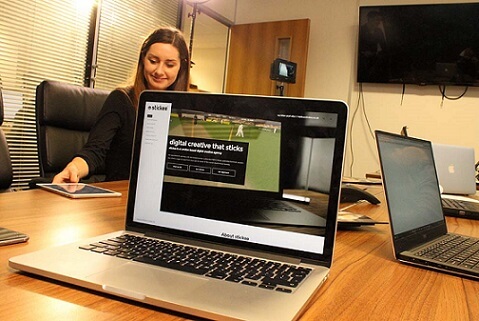
Everyone working in tech will have noticed this: the fields of science, technology, engineering and maths (STEM) suffer from a cruel lack of gender diversity. In the UK, women make up 21% of the core STEM workforce, 19% of IT technicians and only 8% of engineers – and despite progress being made year on year, and the number of women in medicine, law and business increasing rapidly, we’re still far from seeing gender parity in STEM disciplines.
Why aren’t there more women in STEM?
While it may be easy to dismiss these figures as a result of a lack of interest girls and women might have in these disciplines, research finds that this discrepancy only begins to show in the upper levels of education:
In elementary, middle, and high school, girls and boys take math and science courses in roughly equal numbers, and about as many girls as boys leave high school prepared to pursue science and engineering majors in college. Yet fewer women than men pursue these majors. Among first-year college students, women are much less likely than men to say that they intend to major in science, technology, engineering, or math (STEM). By graduation, men outnumber women in nearly every science and engineering field.
Women’s achievements in tech, engineering and maths are shaped by their environment, and by the expectations and biases put on them by society – teachers, parents, peers and later, colleagues. Often, they end up being pushed out of STEM due to the perception that science and maths-based fields are reserved for men, while arts and humanities are perceived as a more ‘girly’ path. Girls lack the confidence to pursue careers in science and technology, despite their school results being just as good, or sometimes better than boys’.
Out of the few who end up studying and working in a STEM discipline, women are highly likely to experience sexism, sexual harassment, and discrimination, and a lot of them are forced to resign from their positions or drop out of their courses to avoid any further harassment. Pregnancy is another issue, with some women having been fired weeks after announcing they were expecting, and 41% of post-doctorate scientists and engineers who gave birth eventually decided against continuing in this career path.
It’s no surprise, then, that so very few women make it to leadership positions and corporate boards in STEM disciplines. Even in the US, where women like Sheryl Sandberg and Marissa Meyer occupy leadership roles, women make up only 11% of people on corporate boards – a number which hasn’t changed in a decade.
We need a diverse workforce
Bringing more women into STEM careers isn’t simply a case of hiring women to reach a quota, tick off ‘gender parity’ from a list, and pat ourselves on the back for being great allies to the women’s rights cause.
Scientific research and technology businesses can all benefit from having a more diverse workforce. Productivity in companies has been shown to increase when both men and women are working on a project, and in research the general knowledge of a field has been shown to grow when women get more involved.
Gender diversity also allows researchers and engineers to see things from a different perspective – partly because women are raised to be more emotionally and socially aware. When an industry is male-dominated, things tend to be developed with only men in mind, and a new perspective is needed to solve problems which affect women and children. Here’s a ‘fun’ fact for you: when airbags were first developed (by a team formed of only men), engineers didn’t realise that most women had breasts, which would push the airbags up towards the neck when deployed, and dozens of female drivers died as a result. This could have been easily avoided by having just one woman on the team.
Businesses, too, benefit from hiring more women: a study conducted by Bank of America, Goldman Sachs and several other institutions showed that companies that employ more women consistently outperform their competitors. Again, this is partly thanks to the different viewpoint and insight women can bring to the table, enabling companies to solve problems more efficiently and serve a more diverse customer base.
How can we make change happen?
In order to achieve real gender parity, we shouldn’t just focus on recruiting more women, but also on changing the environment in which these women will work or study. Putting an end to the sexism and sexual harassment that is rampant in STEM disciplines is essential if we want to see women succeed and progress to senior and leadership roles.
Men (and the few women) already in leadership positions in the fields of science, technology, engineering and maths need to be the ones to start changing things. The American Association of University Women (AAUW) suggests a few ways employers and educators can help:
- Put in place anti-harassment policies
- Work to establish welcoming environments through inclusive workplace policies
- Conduct effective diversity training for employees
- Monitor progress in increasing women’s representation in technical roles
- Ensure that hiring managers and other employees are aware of their own potential gender bias
- Survey employees to assess the level of gender bias within your organization
- Provide opportunities for women to develop a support network of other technical women
- Create welcoming environments for women by endorsing a philosophy that explicitly values the social identity of women and by increasing the representation and visibility of girls and women
stickee’s promise
At stickee, we want to be champions of diversity. We’re looking for ways to share our technical knowledge and serve as role models for young women considering a career in technology. We’re proud sponsors of the BrumHack Hackathon, an event dedicated to help students nurture their creative minds, and we are still seeking more of these opportunities.
We’re working with local schools to offer female students the opportunity to come to our office and learn about technology and programming. Later this year, we’ll be organising a full-day workshop to teach girls about coding and nurture their interest in the field of tech, as well as introduce them to some influential women in STEM and have a discussion about the need for more diversity in these sectors.
We’re also always on the lookout for talented women to join our team – have a look at our recruitment page for available roles.
Get in touch if you’d like to talk about how we can work together to inspire more girls and women to get into STEM!



